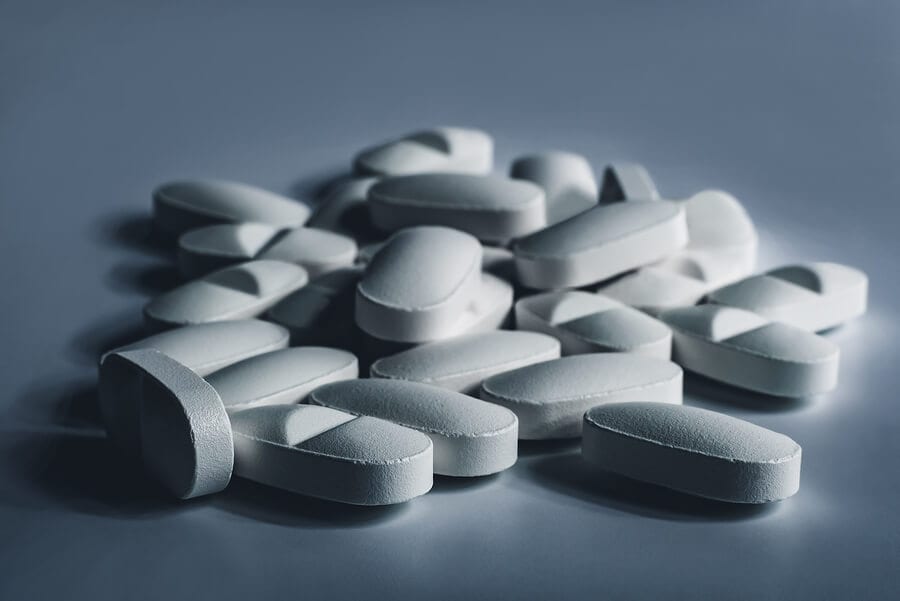
Like with most prescription painkillers, abruptly stopping the use of Vicodin can induce unpleasant withdrawal symptoms that vary in intensity from mild to severe. Some individuals may experience many of them, while others experience only a few. And while there is a general timeline for these symptoms, their duration can also vary somewhat from one person to the next. Vicodin withdrawal symptoms that can occur when hydrocodone use is abruptly discontinued may include the following:
- Muscle aches and pains
- Runny nose
- Teary eyes
- Chills or sweating
- Abdominal cramps
- Nausea and vomiting
- Diarrhea
- Anxiety
- Depression
- Agitation
- Restlessness
- Headaches
- Moodiness
- Fatigue and lethargy
- Sleep disturbances
- Impaired ability to concentrate
- Drug cravings
- Irregular heart rate
- Hypertension
- Suicidal ideations
These uncomfortable symptoms may last up to 7 days, and emotional symptoms, such as anxiety or depression, may persist for much, much longer. For this reason and others, an addiction to Vicodin is most effectively treated using a medical detox followed by a long-rehab program.
What Is Vicodin?
Hydrocodone is a principal active component of Vicodin, as well as several painkillers currently available. To further alleviate pain, Vicodin also includes acetaminophen (e.g., Tylenol), which is an over-the-counter pain reliever. Hydrocodone products are among the most commonly prescribed medications in the U.S., despite the fact that hydrocodone is has a high potential for abuse and addiction. Hydrocodone works by increasing levels of dopamine in the brain, and binding to opioid receptors throughout the CNS. This action induces a depressant effect that can reduce breathing and heart rate, blood pressure, and body temperature. When used as directed for acute injuries on a short-term basis, hydrocodone is believed to be relatively safe. When misused, however, dependence can develop rapidly, and excessive amounts can result in profound central nervous system (CNS) depression and death. Using Vicodin with other depressants, such as alcohol, can also be very dangerous. Long-term use can lead to increased tolerance, dependence, and addiction.
Tolerance and Dependence

When a person uses Vicodin regularly for an extended period, the brain builds a tolerance to the amounts being used. This causes the effects of the drug to be diminished, and increasing amounts will be needed to achieve the desired outcome. Unfortunately, using increasingly large doses of hydrocodone can accelerate the development of dependence, and ultimately full-blown addiction. When a person has become chemically dependent on an opioid, abrupt cessation of use is shortly followed by highly unpleasant Vicodin withdrawal symptoms. These are the result of the brain and body actively working to reestablish balance. During this time, respiration, blood pressure, heart rate, and body temperature may all increase significantly. For this reason, it is never recommended to discontinue a hydrocodone product “cold turkey” or without seeking medical intervention.
Timeline for Withdrawal
Hydrocodone withdrawal generally begins between 6-12 hours after the last dose. Opioid withdrawal symptoms usually peak in about three days, and physical symptoms can last as long as a week. As noted, psychological symptoms and cravings may persist for much longer. The intensity of a person’s Vicodin abuse problems and its duration are factors that can affect a person’s process of withdrawal. This process can include varying withdrawal symptoms, their severity, and the length of time they persist. Moreover, the longer and more excessively a drug is used, the higher the chance that a significant chemical dependence has developed. Certain underlying mental or physical problems may also affect the withdrawal process in a potentially adverse way.
Detox for Hydrocodone Addiction and Treatment
Medical detox is a method that health providers use to help clear a person’s system of toxins after they have stopped using a substance. Detox can occur on either an outpatient or inpatient basis. The important thing is that a trained medical professional is closely monitoring the patient and addressing symptoms and complications if they arise. Medical detox can be very effective at minimizing hydrocodone withdrawal and ensuring a patient is safe and comfortable throughout the process. Detox programs also help to prevent relapse and serve as an excellent beginning to the recovery process. The time frame for a medical detox may vary, but on average, they will continue to treat a person for 5-7 days. Throughout Vicodin withdrawal and beyond, patients may be prescribed medication approved to treat opioid dependence. Such treatments often include Suboxone, which partially consists of buprenorphine, a medication commonly referred to as a partial opioid agonist. Unlike full opioid agonists, buprenorphine attaches to opioid receptors in the brain but does not activate them to the point of euphoria. Buprenorphine, when used correctly, can ease withdrawal symptoms and reduce cravings.
Getting Treatment After Vicodin Withdrawal
Detox is just the beginning, but much more work is needed to sustain sobriety on a long-term basis. After detox, other evidence-based treatment should follow, including behavioral therapy, individual and family counseling, group support, and medication-assisted treatment. Harmony Recovery Center offers tools such as these, which work to ease both physical and emotional discomfort and also dramatically reduce the risk of relapse. If you are suffering from an addiction to Vicodin, please contact us as soon as possible to discuss treatment options. We can help you achieve abstinence and reclaim the life you deserve!